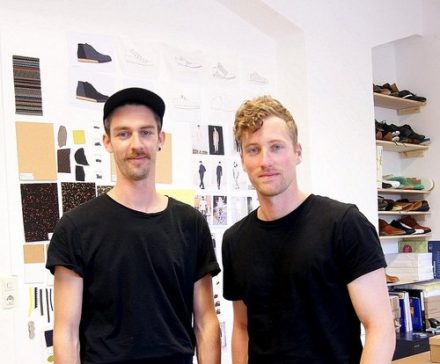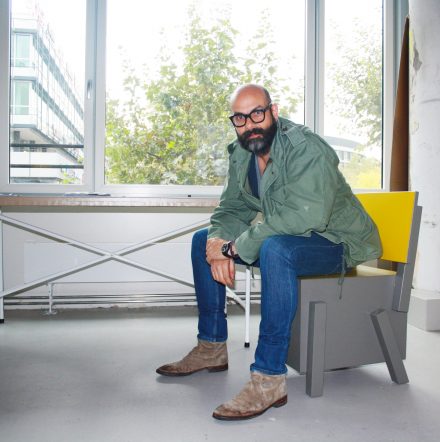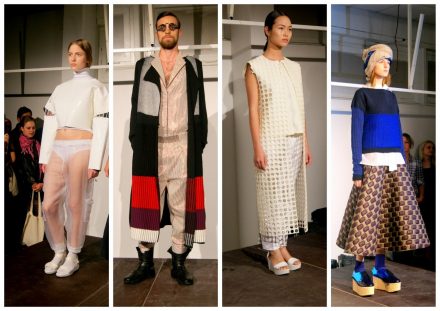The other week our friends at Soulmade Magazine had a chat with designer Laurence Leenaert to learn about creative fulfillment pursued in a bustling city like Marrakech. Read the interview below and see the full article here!
. . .
There is something almost primitive and yet incredibly soothing about the faces on LRNCE‘s hand-painted ceramics; something kind and dreamy, reminiscent of Paul Klee’s childlike brilliance that whisks you away to a world of fading blues and Mediterranean enchantment.
The Belgium export studied Fashion Design at Kask, in Ghent, and founded her label in 2013. After focusing on bags from her studio in Belgium, the young designer moved to Marrakesh and began broadening her line by experimenting with a variety of handicrafts and working side-by-side with local artisans.

Lingering over the brand’s photography, the viewer encounters graphical embroideries and patterns, often inspired by tribal cults and rituals, and reinterpreted through paint and collage studies. Designs include hand‐woven kimonos and rugs, terracotta vases, sandals in leather, raffia, and suede, and mystical mirrors.
LRNCE started as a bag label. What led you to explore other mediums?
I started the brand after doing an internship in Berlin, but I soon realized that I wasn’t good at following up with the fashion industry, the seasons and collections, and that I was far more interested in textiles, objects at large, and their surfaces. I was also very drawn to hand‐crafted objects – making the same object available a thousand times is just not that interesting to me. However, the real shift happened when I moved to Morocco in 2015 and came in contact with its artisan scene. I was thrilled to discover there were so many opportunities to work on different materials and learn about new techniques. One of the first people I met here was a guy who tans leather; we spontaneously decided that I would work on some patterns and we would start making sandals together.
What inspired your decision to move to Marrakesh?
I had been traveling in the desert with my sister and wanted to go back desperately! So I packed my sewing machine and spent another month in Morocco working on new designs. Once I was back in Belgium, I realized I couldn’t live there any longer. I sold all my stuff, shipped 100 Kilos worth of material, and left Belgium for good. At first I wanted to go to the desert, but it wasn’t realistic to start something out there, so I went to Marrakesh. In the beginning I struggled a lot: the culture is very different and I had no money – I was literally living off of my web shop: every time I got an order, I’d catch my breath and extend my stay one more week! Eventually I met the right people and everything worked out.

What made you stay and put up with all the challenges?
I really really wanted it! I don’t know if I could have done the same thing in another country though. Marrakesh was and still is this never-ending source of inspiration to me. Translating my impressions and vision into objects has always come naturally to me here.
What is you favorite thing about Moroccan culture and lifestyle in Marrakesh?
My freedom! I have the local mindset to thank for that. People are so open, even a little reckless, which is a bit ironic because there are so many rules! I also like the fact that when someone asks you how you are, they are truthfully interested in the answer!
Having grown up in Europe, is there any cultural aspects you struggled with in Marrakesh?
I was pretty shocked to learn that men still “go first” no matter what — for example if you are waiting in some line, even if they were standing behind you —, and to witness the way woman are treated. Sometimes it’s really off-putting.
Is it fair to assume that most artisans you work with are men as well?
Yes, and I’m a little sad to say that my friends here are too. Unfortunately Moroccan women are very reserved. I feel like in their eyes, I will always be the white girl from Europe.
Do Moroccan women participate in the arts and crafts scene at all? Have you met any female artists?
Very few. I know a photographer living in Medina who has an art gallery. Her dress code and lifestyle are different from those of most Moroccan women and imply bending certain rules.
Patterns and graphics are a distinctive trait in your work, and often echo Berber motives, like the Fatima eye. What inspires them?
The Fatima eye is very common in Marrakesh. There is something very naive and at the same time very “real” about it, which is also how I like to describe my work. Furthermore, I’ve always been fascinated by tribal rituals, although I don’t have a “conceptual approach”, and most patterning is a reflection of what I see around me, for example, the details and drawings on the doors of the street I live on and previous European influences. I collect everything in my head and then mix it together.
What does the creative process leading to the finished product consist of?
I really work in the moment, it’s very spontaneous. Unlike most fashion collections, there is no big concept up‐front. When I’m working on the blankets for instance, I experiment with embroidery and painting on canvas and then take my ideas and designs to a studio owned by three brothers. Their opinion and expertise means a lot to me because they have generations worth of experience with the materials — the same goes for my tailor and leather artisan —, and therefore have a deep understanding of their craft. We have frequent exchanges, and I can rely on their feedback in every step of the way.
Have you considered going back to Europe? What is keeping you in Marrakesh, now that you’ve been here for a few years?
I feel very close to what I do here, and I believe that’s the key to building something solid and evolving. I could never just design the cuts and send them of to some random establishment.
How does your work resonate with people in Morocco?
I have no customers here. The only people who know about my work are the ones I work with; neighbors and friends only know I have a job… And I want to keep it that way. I like for my friends to know me for my personality and not for my work.
Is there a quote or piece of literature that has special meaning to you and your work?
Picasso said: “Everything you can imagine is real”.
That one never gets old! What do you fantasize about when you set out to design something new?
Everything starts with this world of visuals and the ideas I have in my head.
Is this world imaginary?
It’s imaginary and very dreamy, but I try to make it happen, to make it real. That’s why the things I surround myself with at the studio are all designs of my own, a projection and a reminder of the ideal world and environment I am trying to build and want my pieces to be aligned with.
Thank you for sharing that ideal Laurence. We are excited to see what comes next!
https://www.instagram.com/p/BbeACvGFFW_/?taken-by=wearesoulmade
Soulmade is an online destination for Designers, Artist, and their stories with a special focus on heritage and crafts exteneding far beyond the empty buzzwords and trends that we’re bombarded with in our everyday lives. Continue reading about Soulmade’s favorite designers here!
.
.
.










